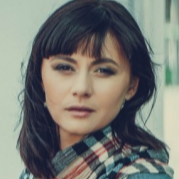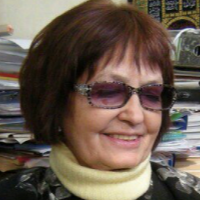International Journal of Intelligent Systems and Applications (IJISA)
IJISA Vol. 9, No. 7, 8 Jul. 2017
Cover page and Table of Contents: PDF (size: 789KB)
Deep Hybrid System of Computational Intelligence with Architecture Adaptation for Medical Fuzzy Diagnostics
Full Text (PDF, 789KB), PP.12-21
Views: 0 Downloads: 0
Author(s)
Index Terms
Computational intelligence, medical data mining, classification, fuzzyfication, growing hybrid system, deep hybrid system
Abstract
In the paper the deep hybrid system of computational intelligence with architecture adaptation for medical fuzzy diagnostics is proposed. This system allows to increase a quality of medical information processing under the condition of overlapping classes due to special adaptive architecture and training algorithms. The deep hybrid system under consideration can tune its architecture in situation when number of features and diagnoses can be variable. The special algorithms for its training are developed and optimized for situation of different system architectures without retraining of synaptic weights that have been tuned at previous steps. The proposed system was used for processing of three medical data sets (dermatology dataset, Pima Indians diabetes dataset and Parkinson disease dataset) under the condition of fixed number of features and diagnoses and in situation of its increasing. A number of conducted experiments have shown high quality of medical diagnostic process and confirmed the efficiency of the deep hybrid system of computational intelligence with architecture adaptation for medical fuzzy diagnostics.
Cite This Paper
Iryna Perova, Iryna Pliss,"Deep Hybrid System of Computational Intelligence with Architecture Adaptation for Medical Fuzzy Diagnostics", International Journal of Intelligent Systems and Applications(IJISA), Vol.9, No.7, pp.12-21, 2017. DOI:10.5815/ijisa.2017.07.02
Reference
[1]JJ. S. Bhalla, A. Aggarwal A novel method for medical disease diagnosis using artificial neural networks based on backpropagation algorithm. –Confluence 2013: The Next Generation Information Technology Summit (4th International Conference). – 2013. – pp.55-61.
[2]R. Isola , R. Carvalho, M. Iyer, A. K. Tripathy Automated Differential Diagnosis in Medical Systems Using Neural Networks, kNN and SOM. – Developments in E-systems Engineering (DeSE), 2011. – pp.62-67.
[3]F. Jiménez, G. Sánchez, J.M. Juárez Multi-objective evolutionary algorithms for fuzzy classification in survival prediction. – Artificial Intelligence in Medicine 60 (2014). – pp. 197-219. DOI: 10.1016/ j.artmed.2013.12.006
[4]Y. Bodyanskiy, A. Dolotov, O. Vynokurova Evolving spiking wavelet-neuro-fuzzy self-learning system // Applied Soft Computing Journal. - 2014. - 14. - P. 252-258. DOI: 10.1016/j.asoc.2013.05.020
[5]Ye.V. Bodyanskiy, E.A. Vynokurova, A.I. Dolotov, Self-learning cascade spiking neural network for fuzzy clustering based on group method of data handling // Journal of Automation and Information Sciences. – 2013. – 45(3). – P.23-33. DOI: 10.1615/JAutomatInfScien.v45. i3.30
[6]J.-S.R. Jang Neuro-Fuzzy and Soft Computing / J.-S.R. Jang, C.-T. Sun, E. Mizutani. – Prentice Hall, Upper Saddle River, NJ. – 1997. – 640 p.
[7]J. Friedman The Elements of Statistical Learning. Data Mining, Inference and Prediction / Friedman J., Hastie T., Tibshirani R. – Berlin: Springer, 2003. – 552 p.
[8]E. Bodyanskiy, A. Dolotov Image processing using self-learning fuzzy spiking neural network in the presence of overlapping classes. – Proc. 11-th Int. Biennial Baltic Electronics Conf. BEC2008. – Tallinn, Estonia, 2008. – P. 213-216.
[9]L. Ruthowski, "Computational Intelligence. Methods and Techniques", Berlin-Heidelberg: Springer-Verlag, 2008. – 514 p.
[10]C.L. Mumford, L.C Jain. Computational Intelligence. Collaboration, Fusion and Emergence. – Berlin: Springer-Verlag, 2009. – 725p.
[11]R. Kruse, C. Borgelt, F. Klawonn, C. Moewes, M. Steinbrecher, P. Held Computational Intelligence. Methodological Introduction. – Berlin: Springer-Verlag, 2013. – 488p.
[12]A. Kroll Computational Intelligence. Eine Einführung in Probleme, Methoden und technische Anwendungen. – Muenchen: Oldenbourg Verlag, 2013. – 428 S.
[13]K.-L. Du, M.N.S. Swami, Neural Networks and Statistical Learning, London: Springer-Verlag, 2014. – 824 p.
[14]I. Izonin, R. Tkachenko, D. Peleshko, T. Rak and D. Batyuk, "Learning-based image super-resolution using weight coefficients of synaptic connections," Scientific and Technical Conference "Computer Sciences and Information Technologies" (CSIT), 2015 Xth International, Lviv, 2015, pp. 25-29. doi: 10.1109/STC-CSIT.2015.7325423
[15]C.M. Bishop, Neural Networks for Pattern Recognition, Oxford: Clarendon Press, 1995. – 482 p.
[16]S. Haykin, Neural Networks. A Comprehensive Foundation, Upper Saddle River, N.J.: Prentice Hall, Inc., 1999. – 842 p.
[17]J.C. Bezdek, J. Keller, R. Krisnapuram, N.R. Pal, Fuzzy Models and Algorithms for Pattern Recognition and Image Processing, Springer 2005. – 776 p.
[18]Zh. Hu, Ye. V. Bodyanskiy, O. K. Tyshchenko, V. O. Samitova, Fuzzy Clustering Data Given on the Ordinal Scale Based on Membership and Likelihood Functions Sharing, I.J. Intelligent Systems and Applications (IJISA), Vol.9(2), pp.1-9, 2017. DOI: 10.5815/ijisa.2017.02.01
[19]H. Kahramanli, N. Allahverdi, “Design of a hybrid system for the diabetes and heart diseases,” Expert Systems with Applications, vol. 35, no. 1-2, pp. 82–89, 2008. DOI: 10.1016/j.eswa.2007.06.004
[20]S. Lekkas, L. Mikhailov Evolving fuzzy medical diagnosis of Pima Indians diabetes and of dermatological diseases. – Artificial Intelligence in Medicine 50 (2010). – pp. 117–126. DOI: 10.1016/j.artmed.2010.05.007
[21]K. Polat, S. Gunes, A. Arshlan A cascade learning system for classification of diabetes disease: generalized discriminant analysis and least square support vector machine. Expert Systems with Applications. 2008; 34, pp. 482–487. DOI:10.1016/j.eswa.2006.09.012
[22]K. Kayaer, T. Yildirim Medical diagnosis on Pima Indian diabetes using general regression neural networks. in: Proceedings of international conference on artificial neural networks neural information processing. – 2003. – pp.181–184.
[23]S. Sahan, K. Polat, H.Kodaz, S. Gunes The medical applications of attribute weighted artificial immune system (AWAIS): diagnosis of hearts and diabetes diseases. Proc. ICARIS'05 Proceedings of the 4th international conference on Artificial Immune Systems. – pp. 456–468. DOI: 10.1007/11536444_35
[24]W.Luangruangrong ; A. Rodtook ; S.Chimmanee Study of Type 2 diabetes risk factors using neural network for Thai people and tuning neural network parameters. – 2012 IEEE International Conference on Systems, Man, and Cybernetics (SMC). – 2012. – pp. 991 – 996. DOI: 10.1109/ICSMC.2012.6377858
[25]H. Temurtas, N. Yumusak, F. Temurtas A comparative study on diabetes disease diagnosis using neural networks. – Expert Systems with Applications 36 (2009). – pp. 8610–8615. DOI: 10.1016/j.eswa.2008.10.032
[26]C.C. Bojarczuk, H.S. Lopes, A.A. Freitas, E. L. Michalkiewicz A constrained-syntax genetic programming system for discovering classification rules: application to medical data sets. – Artificial Intelligence in Medicine, 2004, Volume 30, Issue 1, Pages 27–48. DOI: 10.1016/j.artmed.2003.06.001
[27]Der-Chiang Li, Chiao-Wen Liu, Susan C. Hu A fuzzy-based data transformation for feature extraction to increase classification performance with small medical data sets. – Artificial Intelligence in Medicine, 2011, Volume 52, Issue 1, Pages 45–52. DOI: 10.1016/j.artmed.2011.02.001
[28]Z. Beheshti, S. M. H. Shamsuddin, E. Beheshti, and S. S. Yuhaniz, Enhancement of artificial neural network learning using centripetal accelerated particle swarm optimization for medical diseases diagnosis, Soft Computing, pp. 1–18, 2013. DOI: 10.1007/s00500-013-1198-0
[29]Ye. Bodyanskiy, O. Vynokurova, P. Mulesa, T. Tverdokhlib, V. Savvo Hybrid Clustering-Classification Neural Network in the Medical Diagnostics of the Reactive Arthritis // Int. J. Intelligent Systems and Applications. – 2016. – 8. – P. 1-9. DOI: 10.5815/ijisa.2016.08.01
[30]D. Peleshko, T. Rak, I. Izonin Image Superresolution via Divergence Matrix and Automatic Detection of Crossover // International Journal of Intelligent Systems and Applications (IJISA), 2016. - Vol. 8, No. 12. - P.1-8. DOI: 10.5815/ijisa.2016.12.01
[31]Ye. Bodyanskiy, O. Tyshchenko, and A. Deineko, An Evolving Radial Basis Neural Network with Adaptive Learning of Its Parameters and Architecture, Automatic Control and Computer Sciences, Vol. 49, No. 5, pp. 255-260, 2015. DOI: 10.3103/S0146411615050028
[32]Zh. Hu, Ye.V. Bodyanskiy, O.K. Tyshchenko, and O.O. Boiko, An Evolving Cascade System Based on a Set of Neo-Fuzzy Nodes, International Journal of Intelligent Systems and Applications (IJISA), Vol. 8(9), pp.1-7, 2016. DOI: 10.5815/ijisa.2016.09.01
[33]Zh. Hu, Ye.V. Bodyanskiy, O.K. Tyshchenko, and V.O. Samitova,Fuzzy Clustering Data Given in the Ordinal Scale, International Journal of Intelligent Systems and Applications (IJISA), Vol.9, No.1, pp.67-74, 2017. DOI: 10.5815/ijisa.2017.01.07
[34]S. Osowski Sieci neuronowe do przetwarzania informacji, Warszawa Oficyna Wydawnicza Politechniki Warszawskiej, 2006. – 422s.
[35]A. Cichocki, R. Unbehauen Neural Networks for Optimization and Signal Processing. – Stuttgart: Teubner, 1993. – 526 p.
[36]Pima Indians Diabetes dataset. Available from: http://archive.ics.uci.edu/ml/machine-learning-databases/pima-indians-diabetes/pima-indians-diabetes.data. Accessed: 1st of May, 2008.
[37]Dermatology dataset. Available from: http://archive.ics.uci.edu/ml/machine-learning-databases/dermatology/dermatology.data. Accessed: 1st of May, 2008.
[38]Parkinson dataset. Available from: http://archive.ics.uci.edu/ml/machine-learning-databases/parkinsons/parkinsons.data. Accessed: 1st of May, 2008.
[39]Iris dataset, Available from: http://archive.ics.uci.edu/ml/machine-learning-databases/iris/iris.data. Accessed: 1st of May, 2008.

